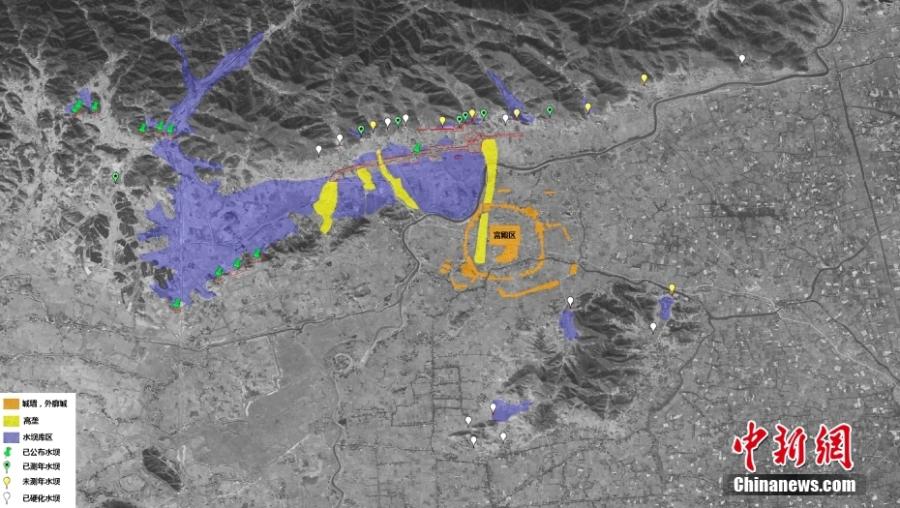
A water conservancy system and the structure of the middle and late phases of the Liangzhu ruins are discovered in east China's Zhejiang Province. (Photo provided to China News Service)
The recent findings have provided a preliminary understanding of the three development phases of the Liangzhu ruins starting from scattered settlements, to the construction of a water conservancy system, and eventually the erection of the Liangzhu ancient city.
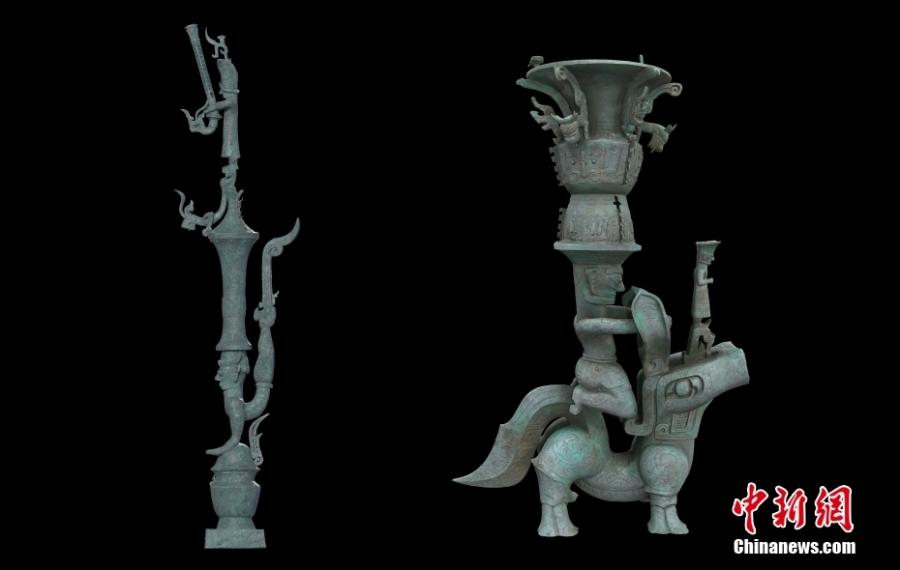
Two successfully matched bronze sculptures that depict a human kneeling on a beast and a bird-footed bronze sculpture unearthed from different pits of the famed Sanxingdui Ruins site are displayed in southwest China's Sichuan Province. (Photo provided to China News Service)
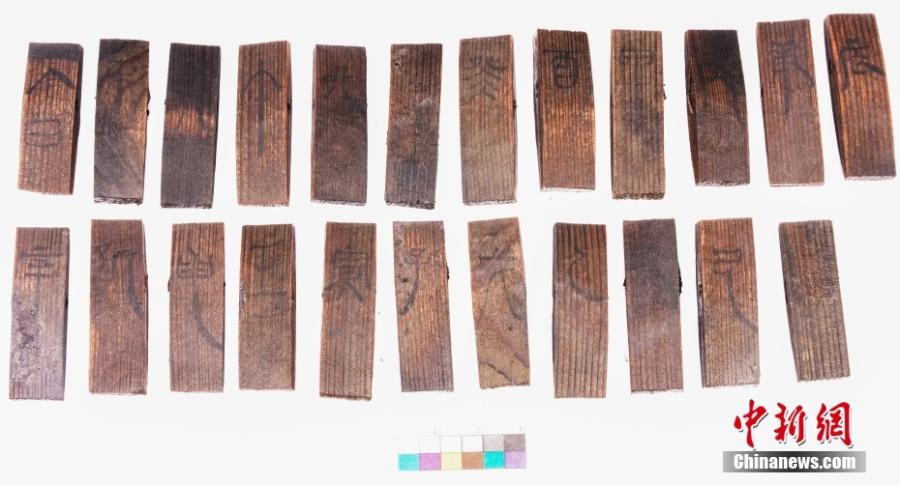
Wood slips are unearthed from a tomb dating back to the Western Han Dynasty (202 B.C.-25 A.D.) in Dulong district of Chongqing, Dec. 5, 2023. (Photo provided to China News Service)
More than 600 pieces of cultural relics such as lacquerware, wood ware, bamboo ware, pottery and bronze ware were excavated from the well-preserved tomb.

A porcelain cup is unearthed at a porcelain kiln site in Taiyuan, north China's Shanxi Province. (Photo provided to China News Service)
A porcelain kiln site dating to the Sui Dynasty (581-618) and the early Tang Dynasty (618-907) was found in north China's Shanxi Province.
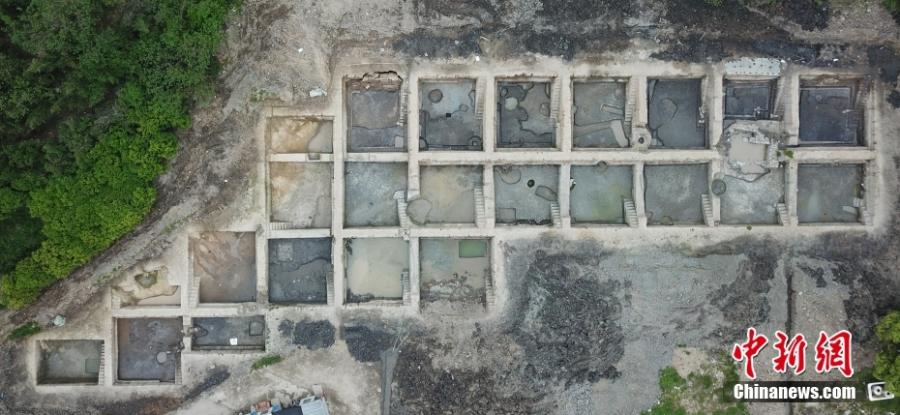
Photo taken in 2022 shows the excavation site of Wenxi ruin site in Ningbo, east China's Zhejing Province. (Photo provided to China News Service)
The remains dating back from prehistoric times to Tang and Song dynasties. Hemudu Culture was one of the most significant cultures of the China Yangtze River region in the Neolithic Age at least 7 000 years ago.
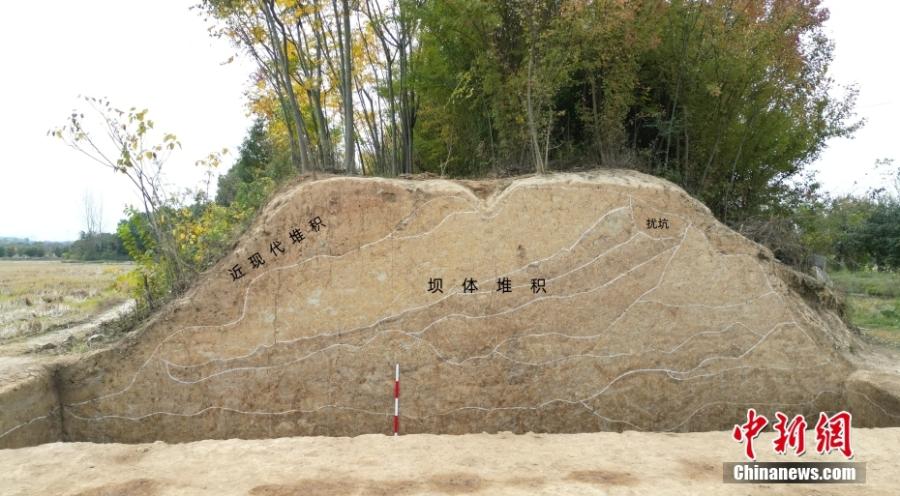
The remain of the Xiongjialing Dam in Jingmen, central China's Hubei Province. (Photo provided to China News Service)
The Xiongjialing Dam, which was initially built around 5,100 years ago, is part of the Qujialing relics site. The dam, complete with a reservoir and spillway, has been identified as China's earliest known water conservancy project.
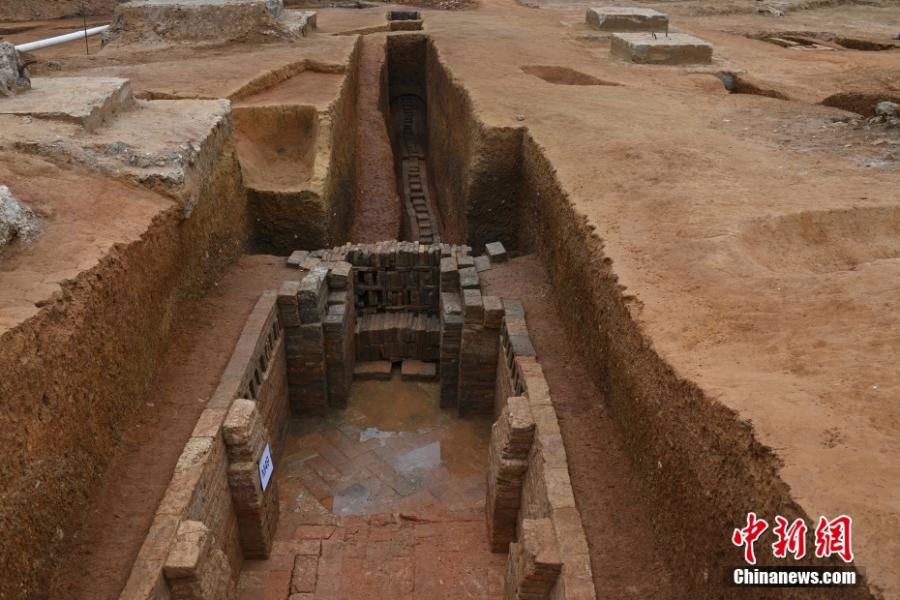
An excavation site of some ancient tombs at a construction site in Guangzhou, south China's Guangdong Province, Dec. 19, 2023. (Photo: China News Service/Chen Chuhong)
A total of 71 ancient tombs dating back from Han Dynasty (202 BC-25 AD) to the Qing Dynasty (1644-1911), including 20 from the Jin Dynasty (265-420) and the Southern and Northern Dynasties (420-589), 14 from the Tang (618-907) and Song (960-1279) Dynasties, and 37 from the Ming (1368-1644) and Qing (1644-1911) Dynasties. dating back from Han Dynasty (202 BC-25 AD) to the Qing Dynasty (1644-1911) were unearthed.
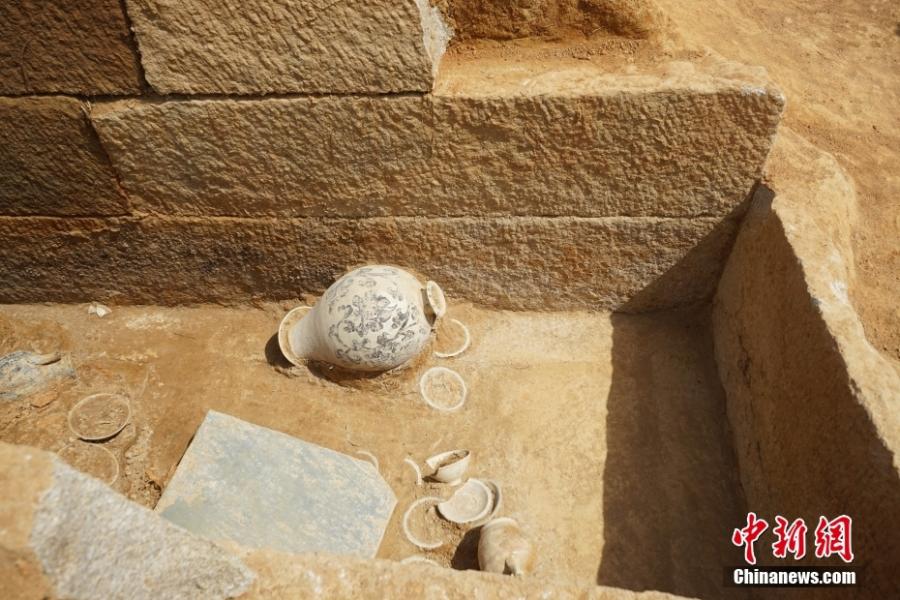
Cultural relics are discovered from an ancient tome of Northern Song Dynasty (960-1127) in central China's Hubei Province. (Photo provided to China News Service)
The newly discovered tomb is the earliest tomb of the early Northern Song Dynasty found in the area.
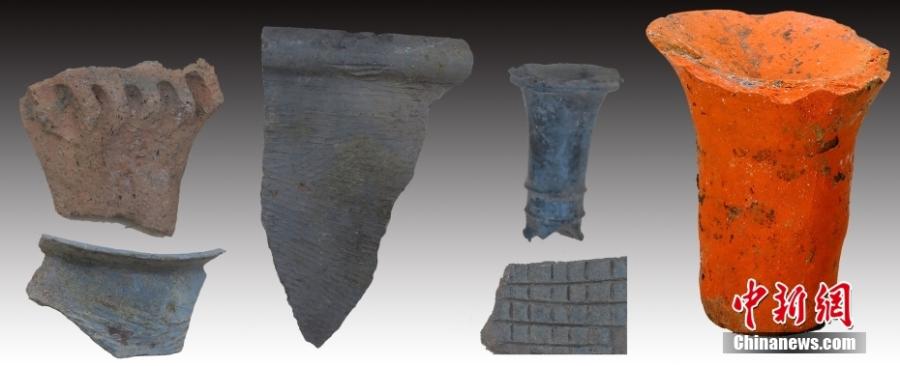
Cultural relics are found from Xiajiawan ruins site of Shijiahe culture, the ruins of a prehistoric city in Hubei Province, Sept. 13, 2023. (Photo provided to China News Service)
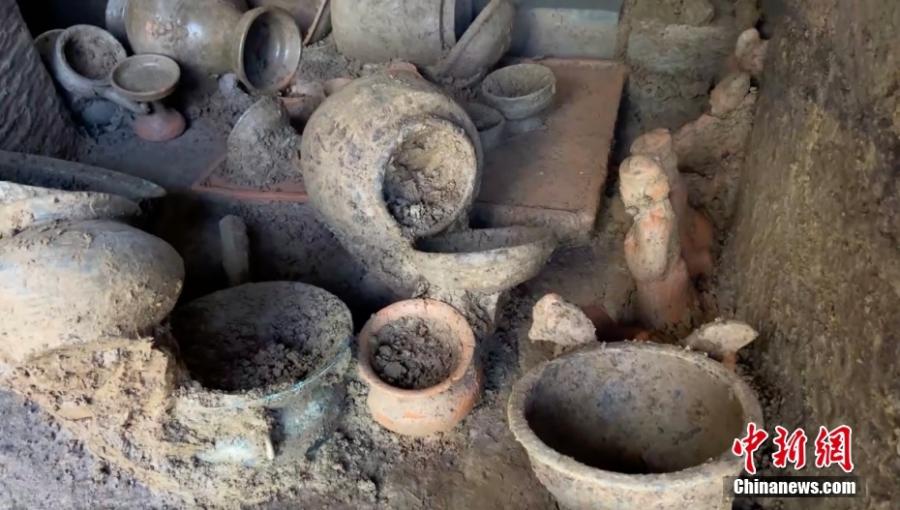
A total of 56 relics are discovered from a tomb of Eastern Han Dynasty (25-220) in Chongqing, May 15, 2023. (Photo provided to China News Service)
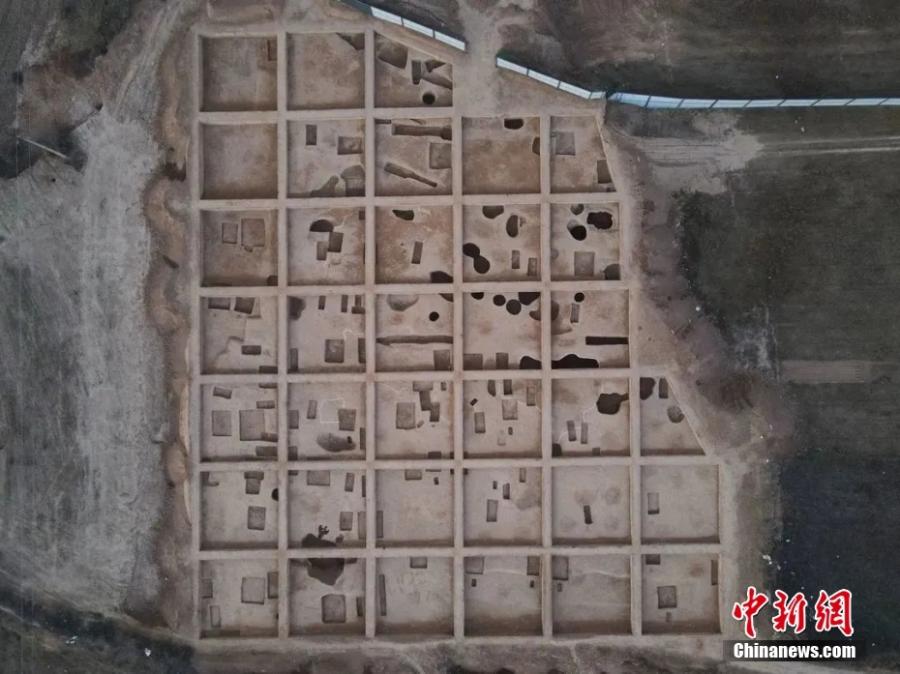
An excavation site of some tombs unearthed in Xiangfen County, north China's Shanxi Province, Sept. 18, 2023. (Photo provided to China News Service)
A total of 215 tombs scattered around 348 relic sites that span from the Neolithic Age to the Qing Dynasty (1644-1911) were discovered. The discovery has provided further evidence that the location was once the capital for the legendary Emperor Yao.
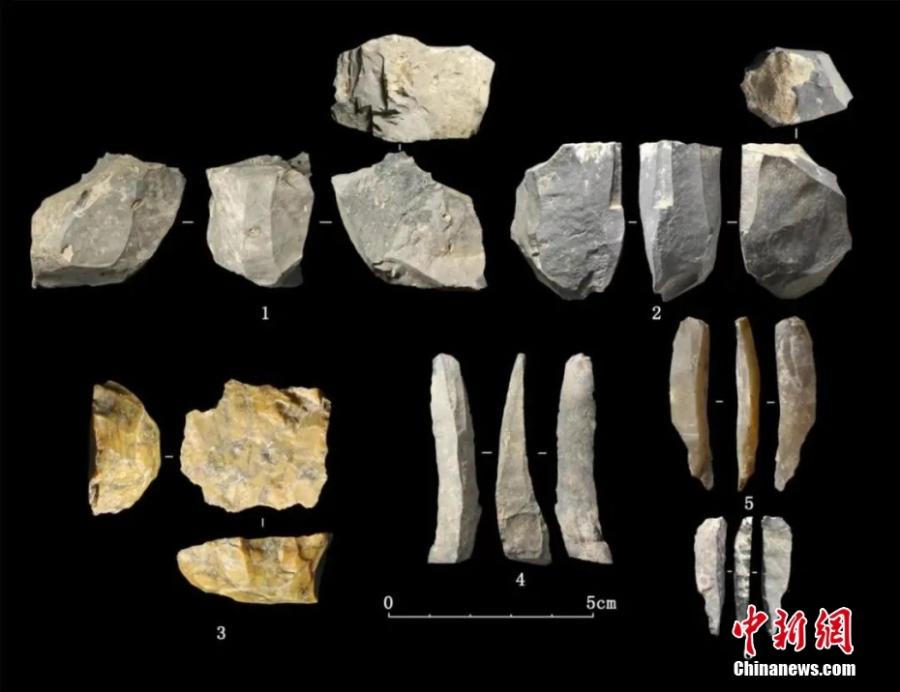
Stone wares are found from the Tanguan Mountain site, earliest Paleolithic age site, with a history going back more than 200,000 years in Meishan city, Southwest China's Sichuan Province, Jan. 10, 2023. (Photo provided to China News Service)
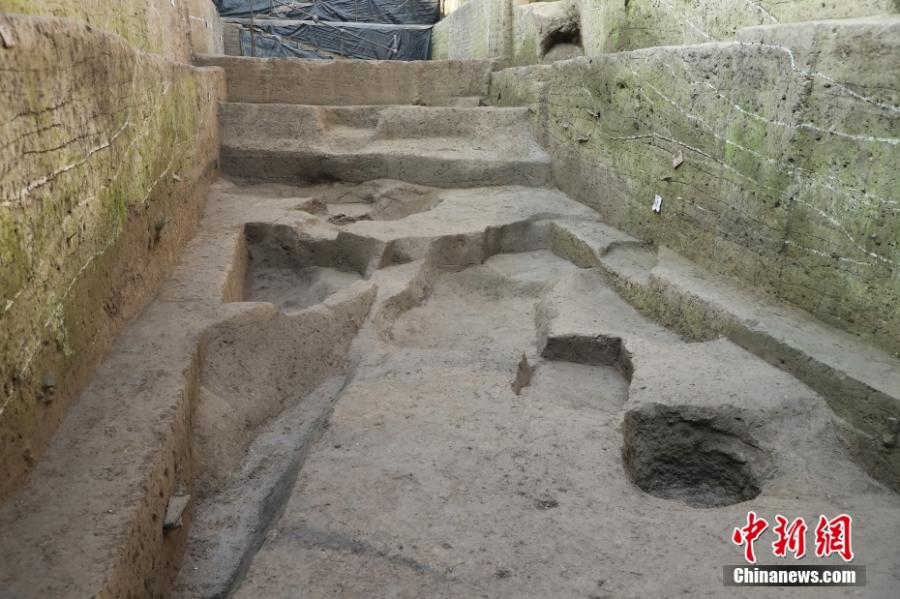
An excavation site of ancient city walls from a Tang Dynasty (618-907) tomb at the Songguogucheng site, or the ancient capital ruins of the State of Song in the Spring and Autumn Period (770-476 BC), in Shangqiu, central China's Henan Province. (Photo provided to China News Service)
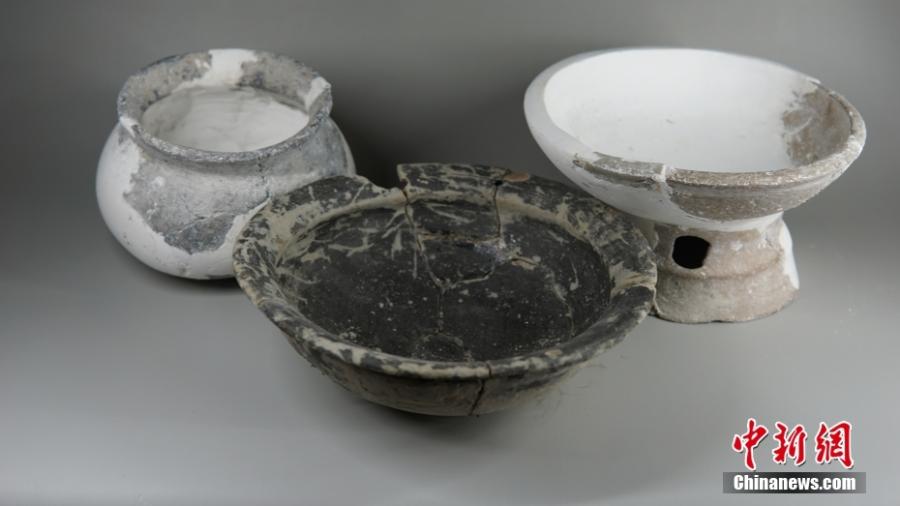
Potteries of the Neolithic Hemudu culture are found at the Chenwang site in Ningbo, east China's Zhejiang Province, Dec. 10, 2023. (Photo provided to China News Service)
The Chenwang site is divided into two sections spanning over 4,000 years from the Neolithic Hemudu culture to the Song Dynasty (960-1279)
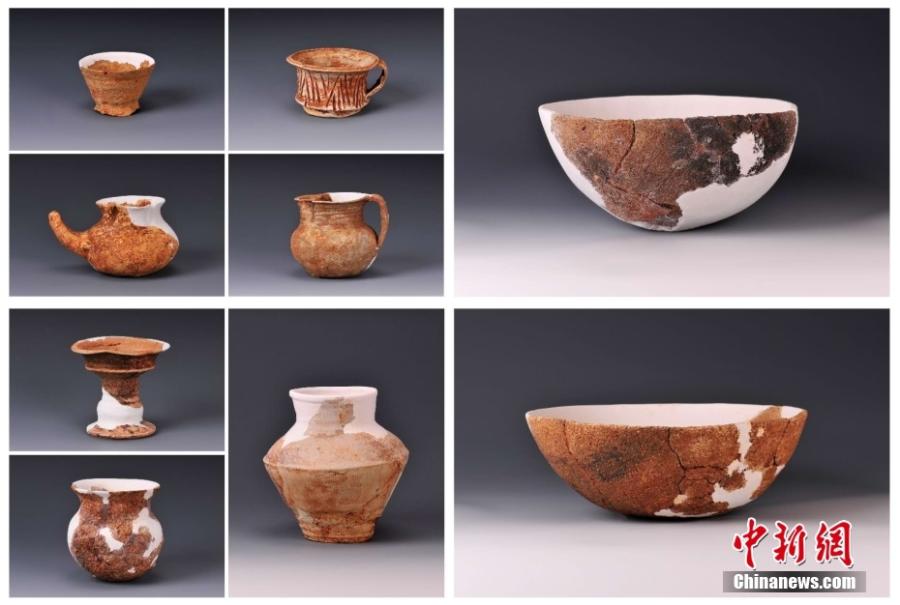
Photo shows potteries unearthed at Donghuaqiu site, east China's Fujian Province. (Photo provided to China News Service)
A series of sites ranging from 3,000 to 7,500 years old along the coast of Fujian province indicated the origins of Austronesian peoples.
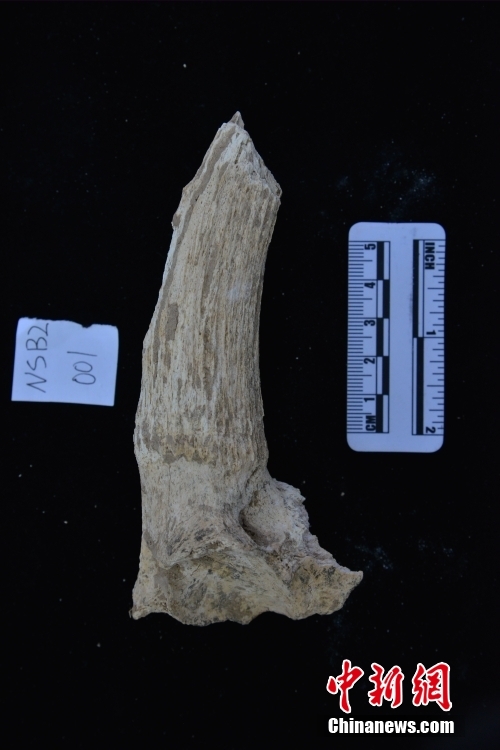
A fossil of an antelope horn is found in Huailai County, north China's Hebei Province.
The discovery in Huailai has further expanded traces of human activities. (Photo provided to China News Service)











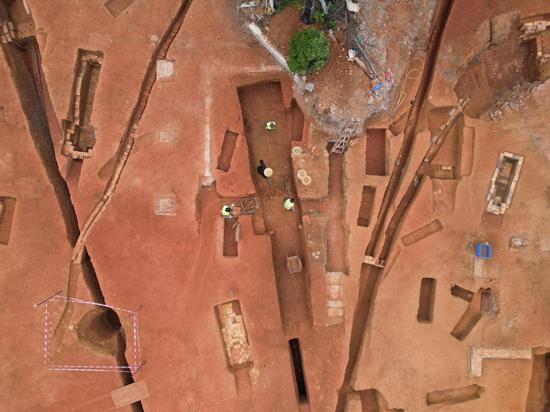











 京公网安备 11010202009201号
京公网安备 11010202009201号